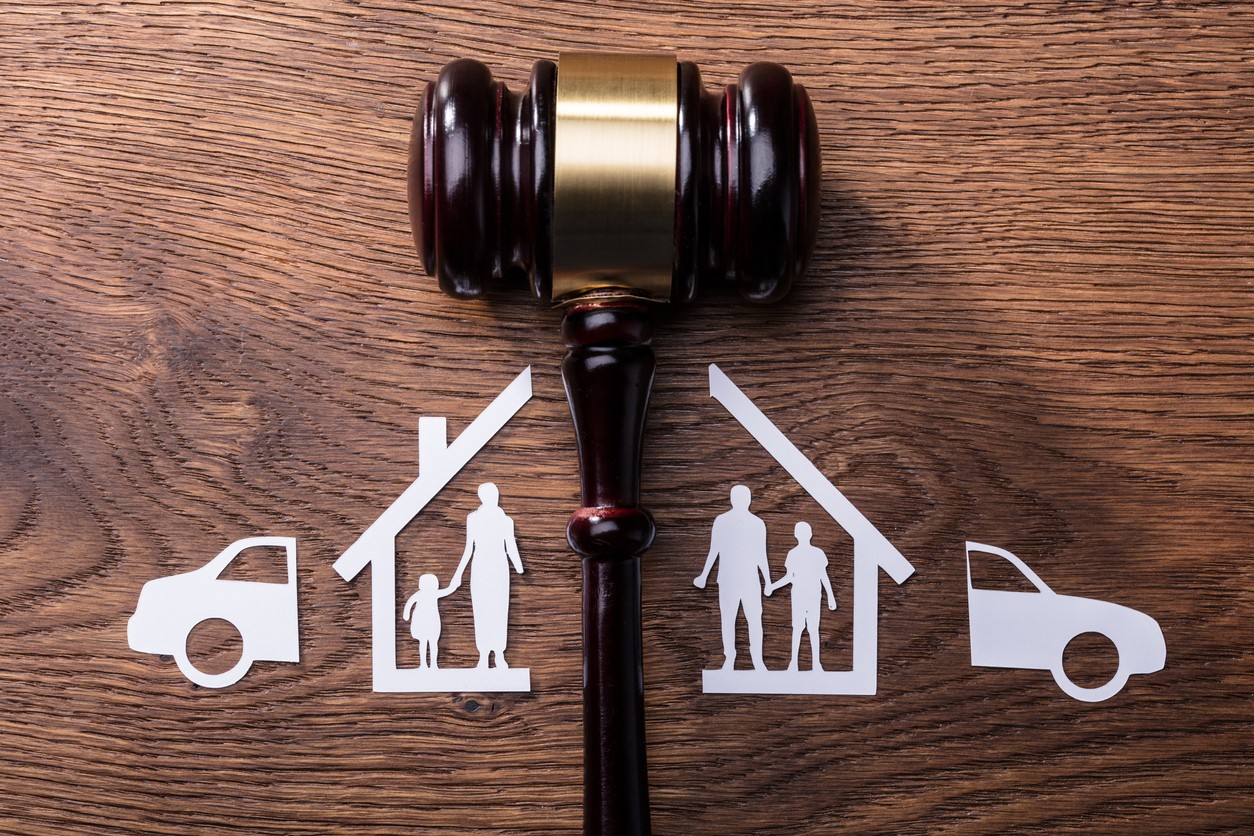In today’s ever-evolving society, families come in various forms. According to Pew Research, only 46% of children under the age of 18 live with two married heterosexual parents who have never divorced. With changing family dynamics, the issue of child custody has become increasingly complex. When parents separate, crucial decisions need to be made regarding child custody arrangements. This comprehensive guide aims to shed light on what child custody entails, the different types of custody arrangements, how custody is determined, and the legal aspects surrounding parental rights.
Understanding Child Custody
Child custody refers to the parent who has control over decisions regarding the child and with whom the child spends their time. It encompasses two main types of custody: physical custody and legal custody.
Physical Custody

Physical custody refers to the parent with whom the child primarily resides and who provides care for them. It determines where the child lives and spends their time.
Legal Custody
Legal custody, on the other hand, pertains to the parent(s) who have the legal authority to make important decisions on behalf of the child. These decisions may include matters related to education, religion, and medical treatment.
Both physical and legal custody need to be addressed when parents separate or divorce to ensure the best interests of the child are upheld.
Determining Child Custody
The determination of child custody can occur through various means, either in or out of court, depending on the parents’ ability to agree on custody arrangements.
Parenting Plan
Ideally, parents should work together to create a parenting plan when they separate. This plan outlines the division of physical and legal custody, as well as the logistics of custody arrangements. Parents are best suited to create this plan as they understand their family dynamics, work schedules, and other factors that affect the child’s well-being. A parenting plan can become legally enforceable if included in a divorce settlement agreement.
Mediation
In cases where parents cannot reach an agreement on their own, mediation can be a viable option. Mediation involves a neutral trained professional who helps facilitate communication and find areas of agreement between the parents. This process aims to create a parenting plan that satisfies both parties’ needs and serves the best interests of the child. Parents can still seek representation from a family law attorney during mediation to ensure their rights are protected.
Custody Evaluations
If parents are unable to reach a consensus on custody, a child custody evaluation may be necessary. During this evaluation, a mental health professional assesses the children and parents to make recommendations regarding custody arrangements. Their assessment assists the court in making a decision when parents cannot agree. Additionally, the evaluation report may also help parents come to a settlement once they understand the recommendations.
Best Interest of the Child
When a court is tasked with deciding child custody, they prioritize the best interests of the child over the desires of either parent. Multiple factors are considered, such as recommendations from mental health professionals, the child’s preference (if applicable), primary caregiver status, stability of the home environment, special needs of the child, emotional connections, and presence of domestic violence. The court does not express a preference based on the gender of the parents, but instead focuses on ensuring the child’s stability and security while maintaining relationships with both parents.
Types of Custody Arrangements
Child custody arrangements can vary depending on the unique circumstances of each family. Here are some common types of custody arrangements:
Joint Custody
Joint custody involves both parents sharing responsibility for the child. The child divides their time between both households, spending equal or substantial periods with each parent. Joint physical custody is often accompanied by joint legal custody, meaning both parents participate in decision-making processes.
Primary Custody with Visitation Rights
In certain cases, one parent may be awarded primary physical custody, while the other parent has visitation rights on a specified schedule. The child primarily resides with one parent, but the other parent is granted allocated periods of visitation. The parent with primary physical custody may or may not also have sole legal custody.
Sole Custody
Sole custody grants one parent exclusive physical and legal custody of the child. The non-custodial parent may have limited or no access to the child, depending on the circumstances. In extreme cases, such as instances of abuse or neglect, the court may terminate the non-custodial parent’s parental rights.
How Visitation Rights Work

When one parent is awarded primary custody, the other parent may be granted visitation or parenting time. Visitation rights can be categorized into three types: unsupervised visits, supervised visits, and virtual visits.
Unsupervised Visits
Unsupervised visits occur when there is no risk to the child’s well-being during time spent with the non-custodial parent. The hand-off of the child typically takes place between parents or their representatives, allowing the non-custodial parent freedom to engage in activities with the child until the visitation period concludes.
Supervised Visits
Supervised visits are necessary when there is a potential risk to the child’s safety during unsupervised time with the non-custodial parent. Factors such as domestic violence, abuse, or neglect may lead the court to require supervised visits. These visits usually occur at specified times and locations and are overseen by a designated individual, such as a counselor, social worker, or trusted family member.
Virtual Visits
Virtual visits are scheduled interactions between the non-custodial parent and the child using technological platforms such as Zoom or phone calls. Virtual visits are often employed when parents live in different geographical areas, allowing for continued contact between the child and the non-custodial parent.
Custody and Paternity

When a child is born or adopted within a marriage, both parents are presumed to be the legal parents. In the event of divorce, either parent has the potential to obtain custody or share custody. However, when a child is born to unmarried parents, additional steps may be required to establish paternity or adopt the child to be recognized as a legal parent.
Grandparent Rights
In some states, grandparents have the right to seek visitation with their grandchildren under specific circumstances. While grandparents usually cannot petition for visitation rights if the parents are married, certain situations may warrant visitation rights. These include cases where a step-parent adopts the grandchild, when the grandchild does not reside with the parents, or when the parents join the grandparents in petitioning for visitation. Additionally, grandparents may also petition for child custody in limited cases, such as when the parents are deemed unfit or when there are concerns of substance abuse or domestic violence.
Modification of Child Custody
Child custody arrangements are not set in stone and can be modified if there is a material change in circumstances or if the modification is in the child’s best interests. Some situations that may warrant a modification include parental relocation, non-compliance with custody terms, changes in the child’s needs, or changes in the parents’ circumstances. In such cases, the parent seeking a modification must petition the court and present evidence supporting why the change is in the child’s best interests.
Seeking Legal Assistance
Child custody issues can be highly complex and emotionally challenging. Consulting with a family law attorney is crucial to understanding your rights and navigating the legal process effectively. An experienced attorney can provide invaluable guidance to help you obtain the preferred custody arrangement while prioritizing the best interests of the child.
Frequently Asked Questions (FAQs)
How does child custody work?
Child custody encompasses both physical and legal custody. Physical custody determines where the child resides, while legal custody grants decision-making authority. The preference is usually for shared custody, but this may not be possible in cases involving abuse, neglect, or unfit parenting.
What are some common child custody arrangements?
Common child custody arrangements include joint custody, primary custody with visitation rights, and sole custody. Joint custody allows both parents to share responsibility and time with the child. Primary custody grants one parent the majority of physical custody, while the other parent has scheduled visitation. Sole custody grants one parent exclusive physical and legal custody.
How do I get full custody?

To obtain full custody, it is necessary to demonstrate that shared custody is not in the child’s best interests. This may involve proving that the other parent is unfit to parent due to an unstable home environment or instances of abuse or neglect.
Conclusion
Navigating the complexities of child custody can be overwhelming for parents going through separation or divorce. Understanding the different types of custody arrangements, legal processes, and the best interests of the child is crucial. By seeking legal assistance and prioritizing the child’s well-being, parents can work towards achieving a custody arrangement that serves their child’s needs while maintaining a positive relationship with both parents.
